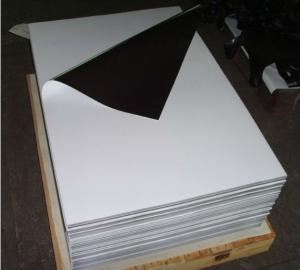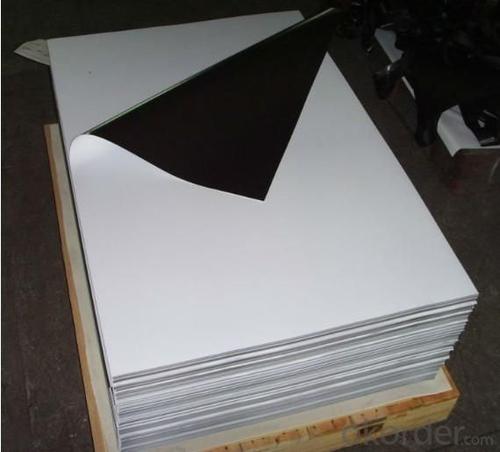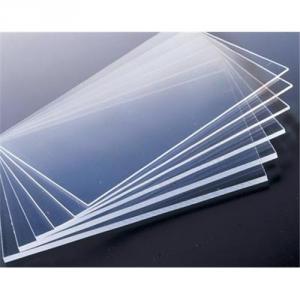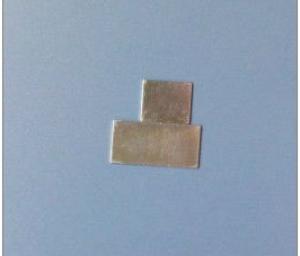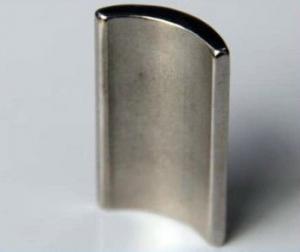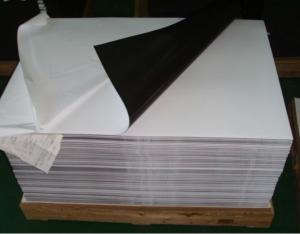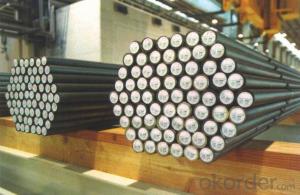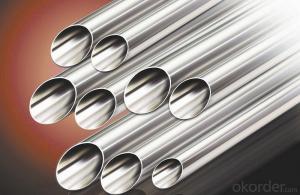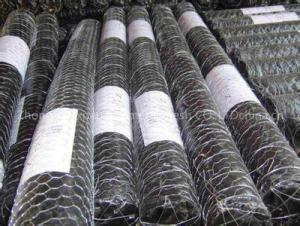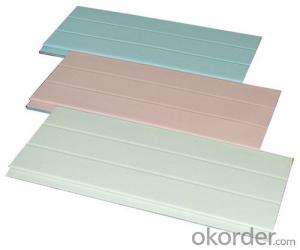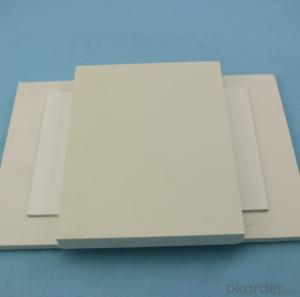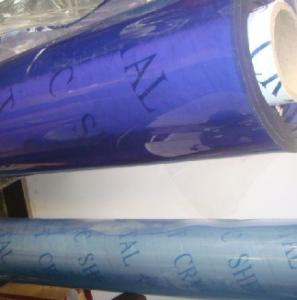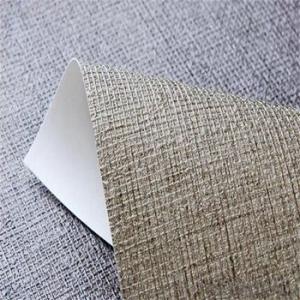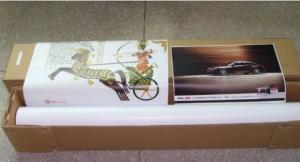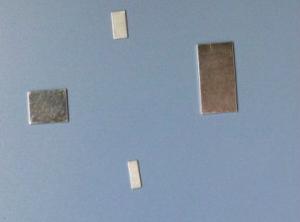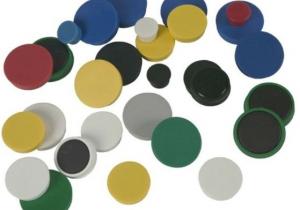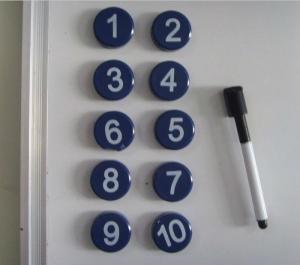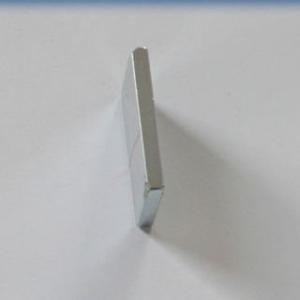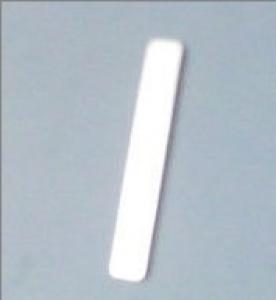Magnetic Sheeting with Matte White Vinyl PVC
- Loading Port:
- China Main Port
- Payment Terms:
- TT or LC
- Min Order Qty:
- 3000 Sets set
- Supply Capability:
- 200 Tons per Month set/month
OKorder Service Pledge
Quality Product, Order Online Tracking, Timely Delivery
OKorder Financial Service
Credit Rating, Credit Services, Credit Purchasing
You Might Also Like
Specifications
1.flexible rubber magnetic ferrous sheet 0.3mm;2.pop display,screen printing magnet;
3.ferrous sheet ,white magnet,glossy
flexible rubber magnetic ferrous sheet;
magnetic sheets,
ferrous sheet,
steel powder sheet
laminations:vinyl,water-based PP film,adhesive,artpaper,PE foam adhesive,
magnetic sheet thickness:0.3mm,0.4mm,0.75mm,1.0mm,
width:620mm,1000mm,1200mm,1220mm,
common size:1000mm*0.5(T)mm*20m,30cartons on one pallet.
- Q: is it possible to make magnetic field as a parall beam of light so that we can pick up any material made of metal wch is placed far frm its normal magnetic range?
- No. It makes a loop shape.
- Q: ? other than electro magnetics
- A neodymium magnet (also known as NdFeB, NIB, or Neo magnet), a type of rare-earth magnet, is a permanent magnet made from an alloy of neodymium, iron, and boron to form the Nd2Fe14B tetragonal crystalline structure. This material is currently the strongest known type of permanent magnet. Neodymium magnets have replaced Alnico and ferrite magnets in many of the myriad applications in modern technology where strong permanent magnets are required, because their greater strength allows the use of smaller, lighter magnets.
- Q: What are the magnetic properties of aluminum, nickel, cobalt, ferrite and neodymium iron boron materials?
- Aluminum nickel cobalt: strategic resources cobalt and nickel, so the price is expensive, magnetic properties higher than ferrite, lower than sintered NdFeB, but Curie temperature is high, so can be used for NdFeB can not be qualified in the field of high temperature
- Q: How can I protect a device from magnetic field?
- Shield it with a metal covering.
- Q: Is it true that an odd number of electrons in an atom means there is a net magnetic force for that atom?
- I have a 99 Jetta - (just hit 199,000 miles!!) - At about 80,000 miles I also had similar issues. though my vw eventually got stuck in reverse and we had to force it out, causing me to lose 1st and 2nd gear (Ever try to get up a hill in 3rd gear? Not fun) The dealer replaced the transmission. 3 times yes, THREE times In the end, my linkeage (sp?) was off and just needed to be realigned. (Had them replace the clutch while they were in there) Anyway, all that just to say I feel you. I HATE my car and love it so much at the same time. What the hell is with these Vdub's? I've gone through 3 catalytic converters about 5 O2 sensors, 2 fuse relays, 3 EGR valves, multiple electrical problems, a/c problems/leaks and that's just the icing . *Sigh* but I just can't get rid of her. btw - check engine light is on AGAIN. :(
- Q: Double end grinding machine grinding magnetic materials why the lack of angle?
- Double face grinding machine can achieve high-end machining accuracy, for processing parts on the following parallel degree, size accuracy, surface roughness requirements of the workpiece, this is the preferred processing machine. It is the biggest difference from the ordinary surface grinder: not by magnetism to fix the workpiece, but the workpiece on the upper and lower planes parallel grinding. That is to say, whether the material is copper or any other material that does not produce magnetism can be processed.
- Q: what material keeps electrons from moving?
- Electrical current or magnetic material
- Q: describe reluctance as the opposition to the establishment of magnetic flux?
- Just as there are electric circuits there are magnetic circuits. The source is usually a solenoid which provides a magnetomotive force measured in amp turns.The magnet flux Φ is measured in webers and is like a current in an electric circuit. ? flows through a magnetic material just like current flows through a wire. The reluctance is like a resistance (resistor) in that it limits the amount of magnetic flux in the magnetic circuit while the resistor limits current in an electric circuit. Reluctance is equal to L/((μ)(A)) where L is the length of the magnetic material, A is the area of the magnetic material and μ is the permeability of the magnetic material. Reluctance is measured in amp turns per weber.
- Q: What affects magnetic force?
- Ok, the tire size on the truck, is written on the side of the tire,Its this way on every set of tires in production. width and height, example r75 /15
- Q: i am a student preparing for a science test.
- A ferromagnetic material is one that has magnetic properties similar to those of iron. In other words, you can make a magnet out of it. Some other ferromagnetic materials are nickel, cobalt, and alnico, an aluminum-nickel-cobalt alloy
We are a leading manufacturer and supplier of magnetic products, such as magnetic materials, reductive iron powder and injection magnets. We take pride in a number of senior engineers and technicians with over 20 years of experience in this sector as well as advanced equipment and the top-ranking management system, which make it possible for us to provide our customers with high quality products, competitive prices and first-class service. We sincerely hope to establish long-term business relationships with customers from at home and abroad on the basis of equality and mutual benefits and seek common development.
1. Manufacturer Overview
| Location | Guangdong,China (Mainland) |
| Year Established | 2009 |
| Annual Output Value | |
| Main Markets | 11.11% North America 11.11% South America 11.11% Eastern Europe 11.11% Southeast Asia 11.11% Oceania 11.11% Mid East 11.11% Eastern Asia 11.11% Western Europe |
| Company Certifications | license 1 |
2. Manufacturer Certificates
| a) Certification Name | |
| Range | |
| Reference | |
| Validity Period |
3. Manufacturer Capability
| a) Trade Capacity | |
| Nearest Port | |
| Export Percentage | 91% - 100% |
| No.of Employees in Trade Department | |
| Language Spoken: | English, Chinese, Japanese |
| b) Factory Information | |
| Factory Size: | 5,000-10,000 square meters |
| No. of Production Lines | 6 |
| Contract Manufacturing | OEM Service Offered |
| Product Price Range | |
Send your message to us
Magnetic Sheeting with Matte White Vinyl PVC
- Loading Port:
- China Main Port
- Payment Terms:
- TT or LC
- Min Order Qty:
- 3000 Sets set
- Supply Capability:
- 200 Tons per Month set/month
OKorder Service Pledge
Quality Product, Order Online Tracking, Timely Delivery
OKorder Financial Service
Credit Rating, Credit Services, Credit Purchasing
Similar products
Hot products
Hot Searches
Related keywords
